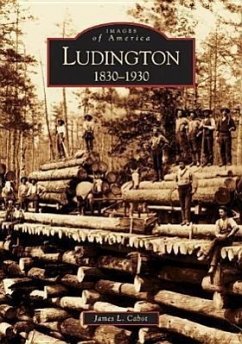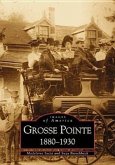The lumbering industry brought thousands of workers and their families to labor in the mills of Ludington and in the forests along the Pere Marquette River in the 19th century. Though some moved on to new lumbering areas, many remained and prospered as Ludington grew to become a manufacturing, transportation, and tourism center in the 20th century. Ludington: 1830-1930 features more than 220 images from the collection assembled by Ludington historian James L. Cabot, which show the progress of the community from a lumber-era boom town to a solid and enduring city. The book focuses on Ludington people and places during this pivotal century. Notable events chronicled within include the 1876 assassination of Luther H. Foster, the precipitous decline in lumbering in the 1890s, and the completion of the Million Dollar Harbor, which in 1914 confirmed the city's status as an important Great Lakes port.
Bitte wählen Sie Ihr Anliegen aus.
Rechnungen
Retourenschein anfordern
Bestellstatus
Storno



